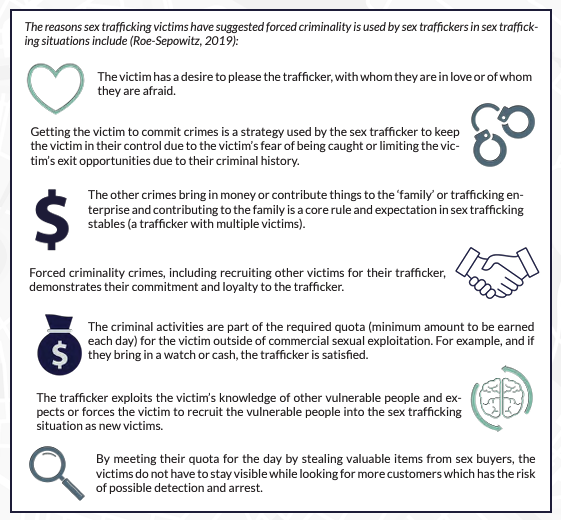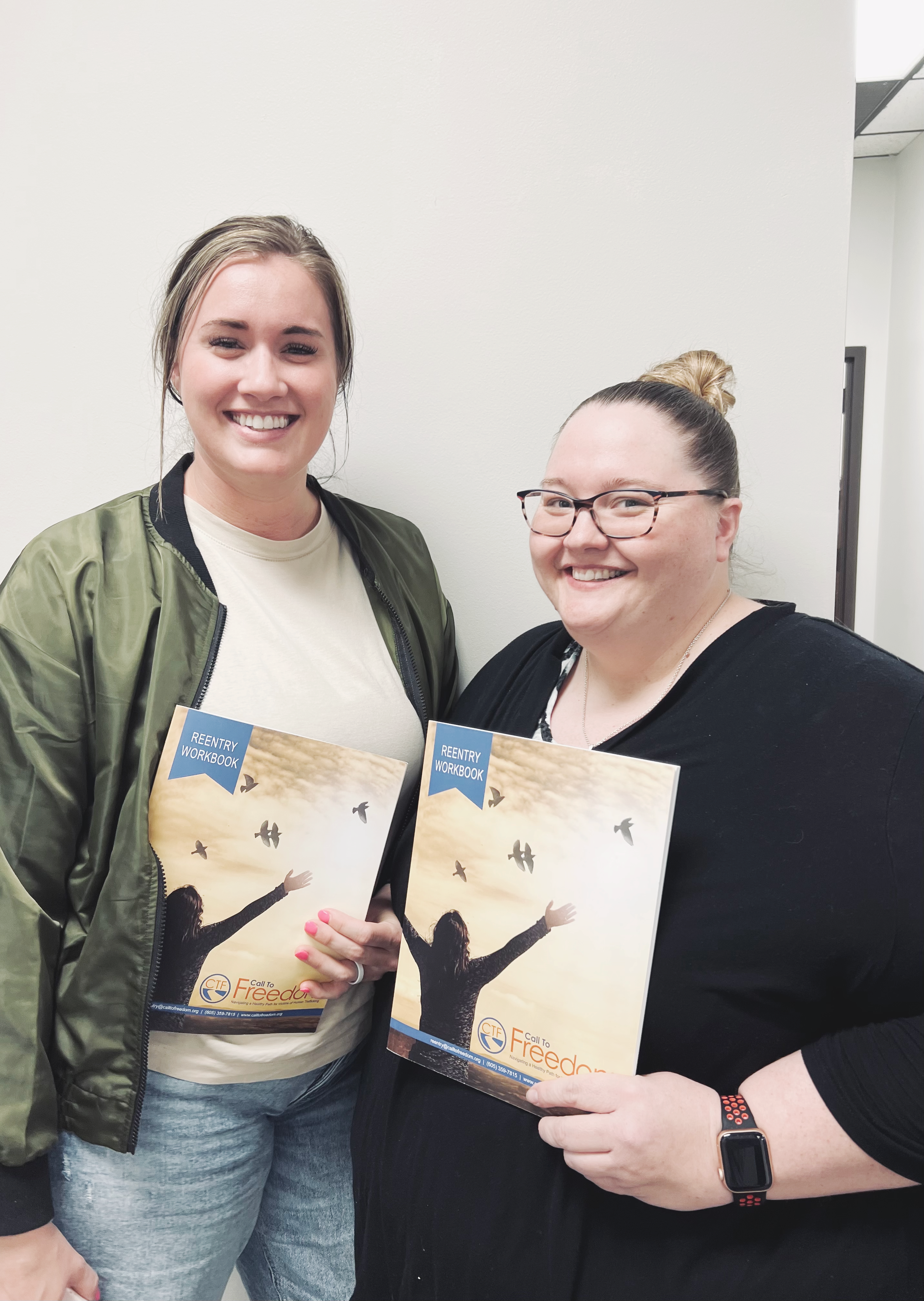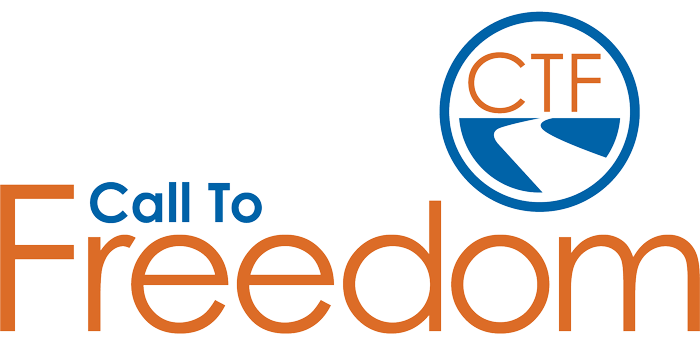
“When I was arrested, everyone that I did have in my life left me. They didn’t care. For almost every person in my life, when I was arrested, I was gone. Having [my case manager with me] made my time in prison easier. She stayed with me the whole time and motivated me to better myself”
CTF Survivor
Why do we partner with our state’s jails and prisons to provide a dedicated case manager and occupational therapist to serve those incarcerated?
In this newsletter, we delve into the complex connection between forced criminality and human trafficking. Join us as we explore this issue and discuss how we can work together to provide healthy pathways for individuals to form long-lasting life management skills and address barriers that come after incarceration.
One study found that the vast majority of survivors reported having some kind of arrest or conviction on their records as a result of their trafficking experience.

Traffickers love to exploit vulnerabilities. Traffickers recruit vulnerable victims through positive reinforcement like grooming, showing love, and fulfilling needs. Through these methods, they disarm their victims and neutralize support systems. Traffickers then coerce or force a victim to cross a line, like physical abuse, sexual abuse, or forced criminality. The fact that victims crossed that line is then used to further control them, enforce their silence, or discredit them if they ever come forward. The more times those lines are crossed, the more tools the trafficker gains against the victim. As the horror of the victim’s situation escalates, turning against the trafficker gets harder and harder.

Keyana’s story
What the pimp told her to do, she did–to avoid or deescalate the violence she knew would follow if she said no and because that was the only life she knew. Sometimes that meant posting pictures of other recruits on Craigslist. She did whatever illegal task he put her up to. Rather than finding freedom when the FBI stepped in, Keyana got charged with trafficking herself. “The charge I ignorantly pleaded out to made it look like I was doing the same things he did to me, to other women and girls,”Keyana said. “The reality of the situation was that I
was on drugs because that was the trafficker’s tool to achieve compliance. I did not consent to, nor did I profit from any illegal misconduct involving other girls/women that resulted from my exploitation. Just like every other slave, I was there because I was manipulated, in fear of homelessness, struggling with drug dependency and fearful of the abuser.”
polarisproject.org
According to United Nations Office on Drugs and Crime
2020 study Victims of Trafficking for Sexual Exploitation as Defendants, many victims often have no alternative but to obey an order. Some hope to limit their own exploitation or escape poverty by playing a role in the criminal process. Traffickers use their victims as a shield to protect themselves from being punished for their crimes. These roles included the recruitment of new victims, collecting proceeds, imposing punishments,

ASU Office of Sex Trafficking Research
or posting advertisements for victims’ sexual services. In very few of the examined cases did the victims engage in acts of trafficking in an attempt to move up the hierarchy of the criminal organization or for economical gain. Where money was a factor, it was to escape the extreme poverty that had led to the initial trafficking or involved financial family obligations, especially in the case of single mothers. Many of the victims in the reviewed cases continued to be sexually exploited even if they engaged in criminal acts.
For many we serve, criminal activity and substance use was introduced by their trafficker and becomes a method of survival. The National Survivor Network Survey on the impact of criminal arrest and detention on survivors of human trafficking found that over 50% of respondents attribute their arrests because of being trafficked. For some, the sequencing of criminal activity and trafficking is more complex. The same vulnerabilities that make people susceptible to trafficking in the first place combined with the trauma of trafficking can lead to negative coping methods and criminal activity even without force.
The same study found that the majority of survivors reported that they had suffered long-term impacts from the arrests and convictions they faced as a trafficking victim.
73% reported this had created a barrier when seeking employment and over 58% reported it as a barrier to housing.
Lack of housing and employment are often cited as significant factors in creating vulnerability to trafficking or other forms of exploitation. How does society hold an expectation of breaking this cycle upon reentry when they are set at a disadvantage for success? Returning to crime and their trafficker is the easy option when that is what they know. Getting released from incarceration can be one of the happiest moments for some, but that joy can quickly fade when the realities of life in the free world take hold and they face the fear of failing once again. We have found that after coming out of incarceration after trafficking, many do not know how to function as an individual or do not feel like they have other options for money and housing.
This takes us back to “Why does Call to Freedom partner with our state’s jails and prisons to provide a dedicated case manager and occupational therapist to serve those incarcerated?”

Call to Freedom provides comprehensive services within prison and jail settings to help those impacted by human trafficking successfully reenter society after incarceration. This program helps provide healthy pathways for individuals to form long-lasting life management skills and address barriers and works alongside other Call to Freedom staff and community partners to provide a continuum care that meets the client where they are at.
These services look like advocating for clients in prison and helping them focus on roots, focusing on safety and next steps after getting
out with those in jail, and continuing to connect with area jails to educate staff on indicators of trafficking.
To help define and navigate this pathway for clients, Call to Freedom’s Reentry Team developed a Reentry Workbook. This resource helps clients process and plan what is needed leading up to and after their release by asking questions like: What are the changes you want to make? What are the steps you plan to take in changing? Who can help you along the way? What could interfere with your plans?
The workbook provides a checklist for everything a client will need to have arranged upon getting out. The workbook creates a space for clients to map out their plan which gives a blueprint to follow, structure, and a source of good ideas. In this, clients have space to plan and are given tips for:
Addiction Recovery
Mental Health and Wellness
Family and Community Support
Housing
Hobbies & Leisure
Employment – including resume building and interview skills
Education
Financial Obligations
Parole
These plans then can be used to hold them accountable to the goals they have set for themselves. It provides a list of resources and shows the clients that they have options. Resources include, food, shelter, transportation, health and wellness, and employment assistance.
We are thankful for our Reentry Team and the passion they have in walking alongside clients coming out of incarceration. They have created a helpful resource for those we serve and community partners who work with those incarcerated.
For more resources about forced criminality and human trafficking:
Criminalizing Victims: Trafficking Survivors With Criminal Records Deserve Relief
Understanding Human Trafficking through the Lens of Utah’s Victor Rax Case

